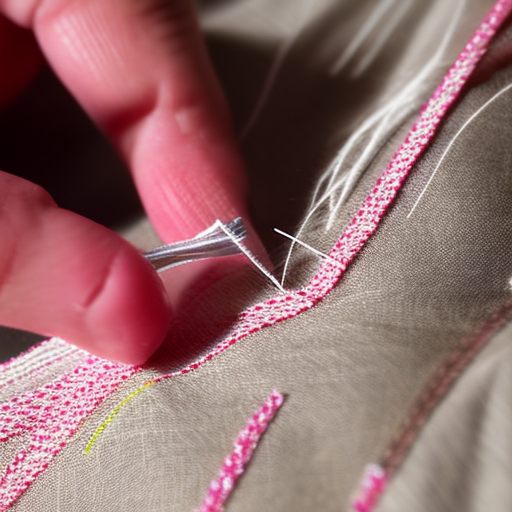Sewing Tips: Hand Sewing Techniques
 sewing tips” />
sewing tips” />
Hand sewing is a versatile skill that every sewing enthusiast should develop. Whether you need to fix a small tear in your favorite garment or add delicate details to a sewing project, the art of hand sewing can be immensely useful. With the following sewing tips on hand, you can enhance your hand sewing skills and achieve professional-looking results.
Choose the Right Needle and Thread
The type, size, and thickness of the needle and thread you choose play a crucial role in hand sewing. Smaller needles with a sharp point are ideal for finer fabrics, while thicker needles work better with heavier materials. Match your thread to the fabric you’re sewing – opt for a cotton thread for lightweight fabrics, and a polyester or silk thread for sturdy ones.
Thread Your Needle Properly
Threading a needle can be a challenging task, especially if the thread is fine. To simplify the process, moisten the tip of the thread to stiffen it and then pinch it with one hand while threading it with the other. If necessary, use a needle threader to assist you.
Master the Basic Stitches
Learning a few basic stitches will serve as a strong foundation for your hand sewing skills. The most commonly used stitches include:
- Straight Stitch: Use this simple stitch for basic sewing, basting, and making temporary stitches.
- Running Stitch: This stitch is great for gathering fabric or sewing two layers together temporarily.
- Backstitch: Ideal for strong seams or darning, the backstitch creates a durable and flexible line of stitches.
- Slipstitch: Use the slipstitch for invisible hems and attaching applique work seamlessly.
Practice Good Thimble Etiquette
When sewing by hand, a thimble can protect your fingers from needle pricks. Before sewing, make sure your thimble fits comfortably. Push the needle with the thimble rather than your fingers to avoid any discomfort or accidents.
Keep Tension Consistent
The key to achieving neat and even stitches is maintaining consistent tension. Avoid pulling the thread too tightly or leaving it too loose. Practicing on scrap fabric and experimenting with different tension levels will help you find the right balance.
Take Breaks for Hand Relaxation
Hand sewing can be time-consuming and can put strain on your fingers and hand muscles. Remember to take regular breaks to stretch and relax your hands. This will help prevent cramps and ensure your sewing remains accurate throughout the process.
In conclusion, hand sewing is a valuable skill that empowers you to repair, embellish, and personalize your garments and sewing projects. The aforementioned tips will guide you towards mastering hand sewing techniques, leading to professional results and a satisfying sewing experience.





Love this! I’m just learning to sew and this is so helpful
Anna Mane: Thank you! I’ve been wanting to learn too
This post has some great ideas – perfect for anyone wanting to learn how to sew or just looking for some helpful tips and tricks! #handsewing #sewingtips
I completely agree! This post is full of great information, I’m so glad I found it. #sewingtips #handsewing
Wonderful! I’m sure this will come in handy for many crafters. #handsewing #sewingtips